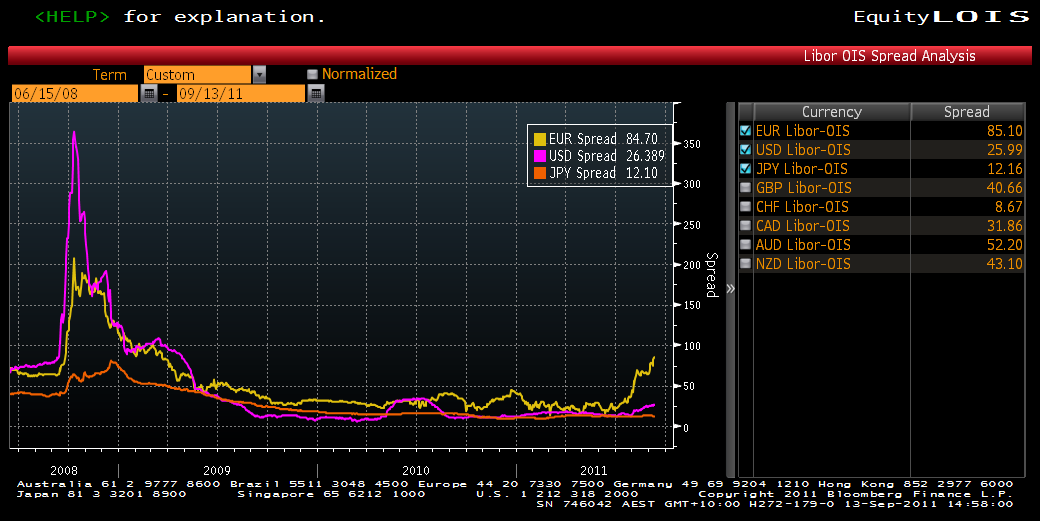This afternoon, Michael Pascoe wrote a soothing piece on the European crisis that I found troubling. We don’t need to get past the first two paragraphs to find out why:
Hands up anyone who thinks a Greek debt default is inevitable. OK, absolutely everyone can all put their hands down. That’s what Europe’s banks think too – and have for quite a while now.
While the threat of European sovereign debt sparking another financial crisis roils markets, not all the supposed surprises are actually surprising.
For example, there’s not much Greek debt in French banks that hasn’t already been written to market, which, on the face of it, means the actual balance sheet impact of a formal Greek default would not be disastrous. Greece defaulting would not per se crash banks outside Greece.
I’m guessing that Pascoe is referring to the overnight mutterings of the Soc Gen CEO that it held only $900 million in peripheral Europe debt. I know of no other evidence for Pascoe’s bold claim. But I shouldn’t have to guess. Pascoe should have provided some evidence. But things get worse in the next paragraph:
As for reports of the current crisis forcing up bank funding costs, well, sort of. Yes, spreads over German rates have gone up, but German rates themselves have fallen, meaning actual funding costs haven’t changed all that much. The jump in credit default rates indicates funding costs will rise if confidence isn’t regained, but funding is manageable for now.
This leaves me confused. Europe shares a single central bank. Therefore it’s bank funding rates are all drawn from a single source, the ECB cash rate. There is no spread to German anything, except in sovereign bonds, which is perhaps where Pascoe has gotten confused.
Then again, maybe he meant that expectations about the ECB cash rate have been revised lower, which is true (white line in below chart). As is the fact that the bank funding rate that is drawn from the cash rate has not fallen at all (orange line):

The OIS shows you the cash rate expectations of the market. In a “normal environment” bank funding costs (the Euribor rate) would move with this expectation of cash rates. But when the spread between them blows out, the market is signaling an increase in bank credit risk. In short, the falling cash rate is currently covering the rise in interbank rates but the Euribor-OIS spread, the yellow line on the chart, is still telling us something about European bank risk.
But that still doesn’t mean much unless you look both at history and other markets. As the chart below shows, going back to June 2008, Euribor-OIS spread has rocketed higher while USD Libor – OIS and JPY Libor – OIS has not. Check out the yellow line on the chart before – it may not be 2008 but it’s well on its way:

It is some cause for reassurance that to date the USD OIS spread has not been affected. But my feeling is that what will happen in the event of a Greek default is that US banks will stop lending to European banks. Hank Paulson, Ben Bernanke and Tim Geithner didn’t want Lehman to head into bankruptcy but they calculated that markets could cope with a Lehman collapse after months of turmoil. Clearly they underestimated the fear and panic that ensued when no one knew which banks were holding what. It is my fear that we will repeat this in the event of a default.
Add in that Bloomberg has reported over the past few days about Germany readying itself for a Greek default and that Chancellor Merkel is now talking about the need to avoid an “uncontrolled insolvency” in Greece.
Then draw your own conclusions about what this data is telling you about the health of the European banking systems and the risks around it.

